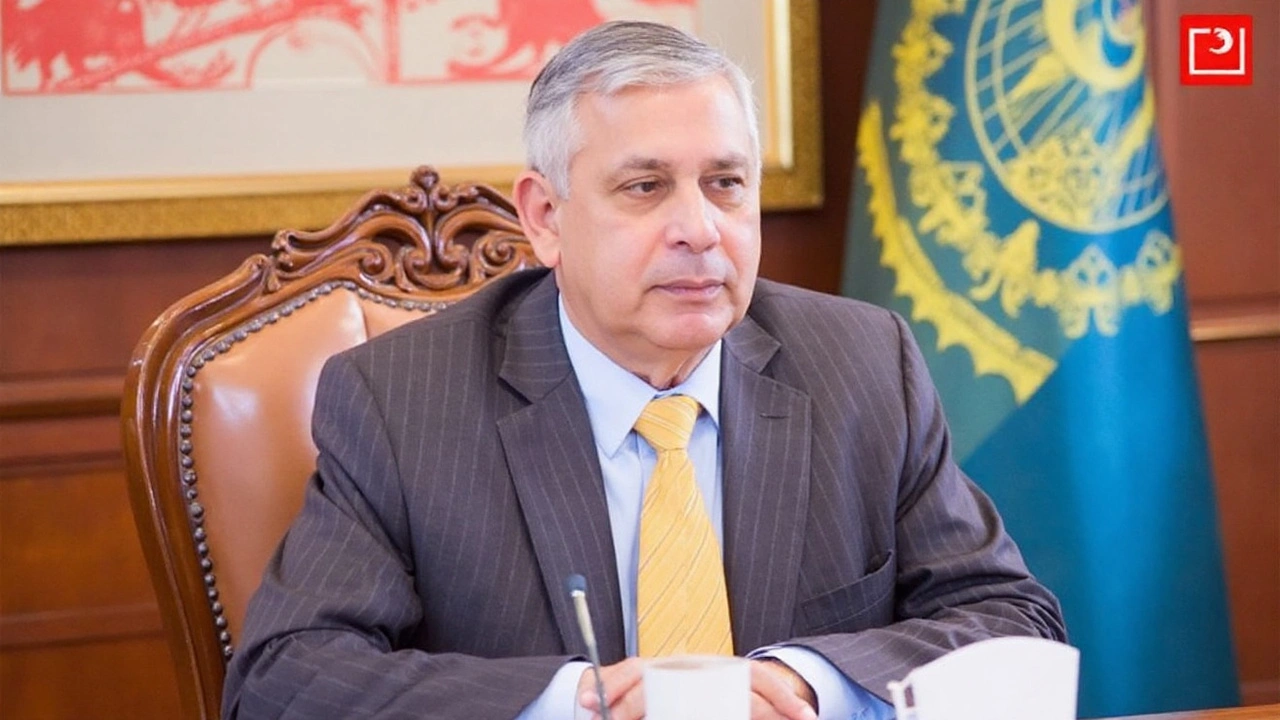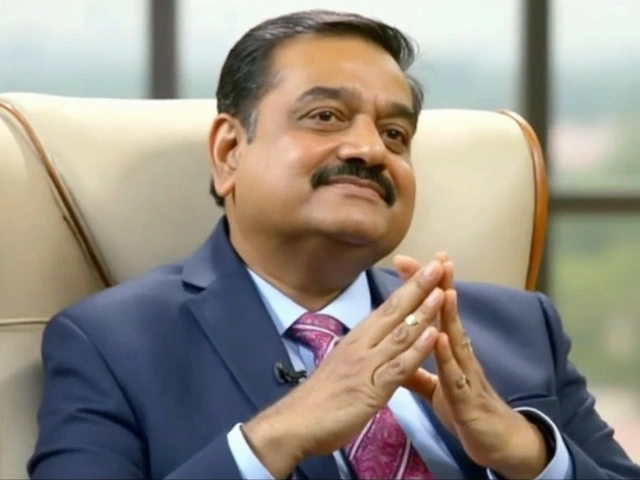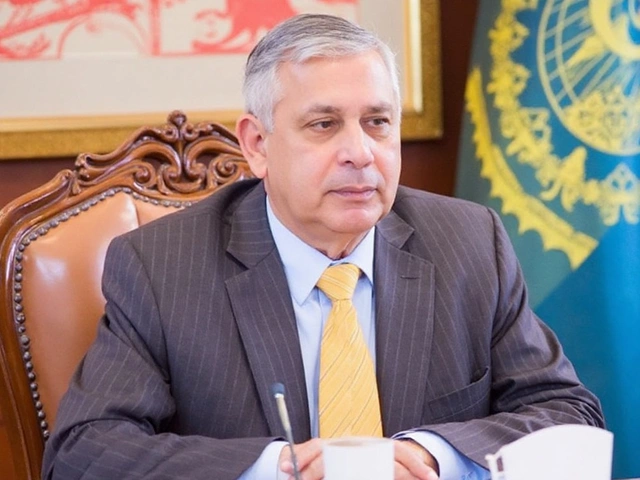A rare courtroom rebuke to a sweeping tariff play
A federal appeals court handed down a 7-4 decision that knocks out the legal foundation for most of President Donald Trump’s broad import levies, ruling that the White House overreached by using emergency powers to impose economy-wide trade barriers. The opinion targets actions taken under the International Emergency Economic Powers Act (IEEPA), a law designed for targeted sanctions, not blanket tariffs. Steel and aluminum duties tied to different statutes remain untouched—for now—but the ruling strikes at the heart of the policy that has shaped five volatile months of global trade.
For India, the impact is immediate and painful. Washington’s move piled a punitive 25% tariff on top of an existing 25% duty on certain Indian goods, citing New Delhi’s discounted purchases of Russian oil. The combined wall—50% at the border—has squeezed some of India’s most labor-heavy exports: textiles, footwear, leather goods, and jewelry. Factories that rely on slim margins now face orders on hold, longer payment cycles, and buyers switching to suppliers in Southeast Asia.
New Delhi hasn’t taken it lying down. Trade Minister Piyush Goyal called the measures unacceptable, insisting India “will neither bow down nor ever appear weak.” Behind the message: a push to reroute exports to other markets in the Middle East, Africa, and Asia, trim input costs at home, and speed reforms that cut red tape. The strategy aims to soften the blow if the tariff fight drags on into next year.
The court’s decision didn’t pull the tariffs immediately. Duties will stay at the border while the government appeals, a process that could race to the Supreme Court. That legal limbo is costly. Importers must keep paying at elevated rates or risk supply disruptions, even as they eye the possibility of refunds if the ruling ultimately stands. Exporters face the same fog: quote new prices and risk being undercut if duties fall, or hold steady and lose contracts now.
The timing complicates Washington’s diplomacy. Treasury Secretary Scott Bessent had aimed to close negotiations with key trading partners by Labor Day. With the court tossing a legal grenade into the talks, that deadline is slipping out of reach. Partners that had rolled out or threatened retaliation are reassessing, but no one is declaring victory until the Supreme Court weighs in.
At stake is more than a handful of tariff lines. The case tests how far a president can go in using IEEPA—traditionally a scalpel for sanctions on adversaries—to build broad tariff walls across friendly and allied economies. The majority signaled that Congress never gave the executive a blank check for trade. In plain terms, if the White House wants economy-wide tariffs, lawmakers—not emergency powers—have to say so.
What changes now—and what doesn’t
Here’s the practical upshot today: Most measures tied to IEEPA are on thin ice. But duties imposed under other authorities still stand. That includes steel and aluminum tariffs, which were levied under different statutes and aren’t affected by this ruling. So the global trade map doesn’t snap back to 2017. It shifts, unevenly.
For India, the math is brutal. A 50% border tax wipes out price advantages for everyday goods—cotton shirts, leather sandals, silver jewelry—that anchor jobs in small and medium firms. Buyers in the United States have been switching to Vietnam, Bangladesh, and Mexico, nudged by shipping time, currency swings, and now legal uncertainty. Economists tracking India’s factory output say even a short spell of tariffs at these levels can scar employment for months, because rehiring and retraining lag once orders vanish.
Inside India, policymakers are trying to cushion the shock. Export credit has been nudged up in priority, state agencies are fast-tracking customs clearances where possible, and industry groups are lobbying for targeted rebates on inputs such as dyes, leather chemicals, and machine parts. None of that replaces lost orders, but it can buy time.
U.S. consumers have noticed the difference at checkout. Basic imports cost more; some retailers spread the increases across product lines, others raised sticker prices outright. The result is uneven inflation pressure: sharper in categories with less competition, softer where big-box buyers can lean on suppliers for concessions. The longer the appeal drags on, the more these micro-price shifts harden into new norms.
The legal fight ahead is high-stakes and technical. Expect arguments over the scope of IEEPA, the separation of powers, and whether the executive can stretch emergency authorities to cover broad, peacetime tariffs. The government will likely argue that global energy flows and national security risks justify robust action; the challengers will say Congress controls taxes and tariffs, and emergency statutes aren’t a backdoor to rewrite trade law.
For businesses trying to plan the next quarter, the big questions are practical. What should they do while tariffs remain in effect but under a court cloud? Three themes dominate boardrooms and shop floors right now:
- Pricing and contracts: Many importers are adding tariff contingency clauses to purchase orders and renegotiating delivery terms to share risk if duties fall—or rise—during appeal.
- Supply chains: Buyers are diversifying suppliers across South and Southeast Asia to avoid dependence on any one tariff-exposed route, even if that adds complexity.
- Cash flow: Firms are forecasting potential duty refunds if the ruling is upheld, but not counting on them; auditors want clear documentation of payments, protests, and entries with U.S. Customs.
India’s response is equally tactical. Exporters are leaning into products with brand-driven pricing power—handcrafted textiles, gem-set jewelry—where a few percentage points at the border hurt less. Others are pivoting to regions where India has active trade agreements or faster customs windows. It’s not a perfect hedge. Moving production lines, even within the same city, takes time, permits, and capital.
The politics are messy. The White House has framed the tariff push as leverage to reset trade balances and to penalize countries buying discounted Russian oil. Trading partners have called it protectionism in a different suit. With the court stepping in, Congress may face pressure to either narrow IEEPA in trade contexts or pass explicit tariff authorities—something lawmakers have avoided for decades because tariffs are tax-like and politically risky.
Financial markets dislike this kind of ambiguity. Over the past five months, manufacturers with heavy import bills have traded like utilities—defensive, jittery, waiting for clarity—while shipping and logistics firms have ridden the swings in volume and routing. Currency markets have been cautious too; when trade headlines shift daily, hedging gets expensive.
Customs desks are feeling the strain. Shipments are still clearing, but with more protests filed to preserve refund rights and more questions about product classification as companies hunt for lower-duty tariff codes. Compliance officers are dusting off audit trails and training teams on country-of-origin rules, because a single misstep can invite penalties in a period of heightened scrutiny.
As for timing, appeals in cases like this can move fast but rarely fast enough for supply chains. Even if the Supreme Court takes the case on an expedited basis, briefing and argument would likely push any final word into the coming months. In the meantime, the tariff regime lives on in a kind of legal twilight—collecting revenue, reshaping orders, and fueling lobbying on both sides.
There’s a geopolitical layer too. India has tried to keep a steady line with Washington while preserving strategic autonomy on energy. That balance has become harder to sell domestically when small exporters are taking the hit. If the tariffs survive on appeal, expect India to double down on south-south trade routes and to court investment that helps it climb up the value chain, where margins can absorb shocks.
For now, the headline is simple: a rare court decision clipping a president’s tariff wings, without pulling them off entirely. Most measures tied to IEEPA are in jeopardy, steel and aluminum duties remain, and the fight is headed toward a higher bench. Businesses will keep paying at the border while lawyers argue in marble halls. And a lot of livelihoods—on factory floors in India and in import docks across the U.S.—will hinge on what judges decide about how far a president can go with Trump's tariffs when he reaches for emergency powers.






